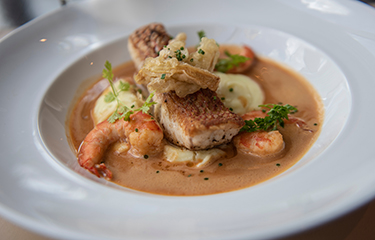Understanding the European market potential for reef fish

Opportunities for marketing reef fish in Europe were spotlighted in a recent webinar hosted by the Centre for the Promotion of Imports (CBI), which encourages European Union nations to expand their imports from developing countries.
The webinar focused on the results of a study exploring the European seafood market, which shows high growth potential for importing reef fish such as snapper, grouper, and parrotfish.
Overall seafood consumption in Europe is more than 12.5 million metric tons (MT) per year, and the average per capita consumption is 24.3 kilograms, according to statistics shared in the CBI webinar. Southern Europeans are the largest consumers of seafood, with Portugal at 56.8 kilograms per person and Spain at 46.5 kilograms per person.
Currently, reef fish are niche products in the European seafood market, accounting for around 1 percent of consumption. However, as current domestic supply of seafood does not satisfy consumer demand – the European Union imports 60 percent of the fish and seafood it consumes – it represents one of the world’s largest seafood markets.
Global Trade Tracker shows that in 2019, six of the world’s top 10 fish and seafood markets were in Europe. Spain was the fourth-largest market after the U.S., Japan, and China, with imports of EUR 7.87 billion (USD 9.34 billion). France was in fifth place (EUR 6.5 billion, USD 7.71 billion), Italy in sixth place (EUR 6.4 billion, 7.59 billion), Germany in eighth place (EUR 5.4 billion, 6.41 billion), Sweden in ninth place (EUR 5 billion, 5.93 billion), and the U.K. in 10th place (EUR 4.1 billion 4.86 billion).
For exporters of reef fish to Europe, the main opportunities lie in the ethnic retail and foodservice sectors, although their attractive appearance also makes them viable for mainstream retail and foodservice outlets. The growth of ethnic minority populations across Europe, particularly in urban areas, is expected to lead to an uptick in consumption, according to the CBI presentation.
Even more encouraging for sellers of reef fish, emerging data shows more Europeans across the board are showing greater interest new cuisine types in foodservice, with food-centric media coverage a factor in helping to drive sales of fish not seen in traditional European cooking.
Snappers (Lutjanus spp.) are an important artisanal catch in tropical and subtropical marine waters, and Food and Agriculture Organization (FAO) of the United Nations figures show a catch of 585,000 MT in 2017. As artisanal fisheries are notoriously difficult to monitor, this is likely to be an undercount of the true figure.
European consumers are most familiar with red snappers, and Lutjanus malabaricus, L. campechanus, L. purpureus, and L. sebae are all sold as red snapper.
Groupers (Epinephelus spp.) are one of the most expensive reef fish. Difficulty in identifying individual species means there is a lack of accurate catch data, but the global catch in 2017 was estimated at around 317,000 MT.
There are more than 95 species of colorful parrotfish, which are generally sold as Scarus spp. They are less important for commercial fisheries than snappers and groupers, with a catch of just 6,000 MT registered in 2017.
Buying preferences per country are broken down in the study, but in general, reef fish are sold in a variety of formats to end-consumers and restaurants, including whole individual quick frozen (IQF), whole fresh, and frozen fillets, or triangles. The optimal fillet size for foodservice is 170 to 220 grams.
In terms of cooking techniques, grouper and snapper are regularly used in soups, stews, or pasta sauces in the major fish-eating Southern European countries; they can also be grilled or baked in the oven.
The study covered in the webinar looked at the latest trends that influence market access in Europe, including the health benefits of eating fish high in omega-3 fatty acids, mislabeling, and consumer perspectives on frozen fish. It recommended that exporters pay attention to selling the story behind the fish, and gave examples of ways in which promoting the fishermen and fishing methods, and offering information about the area where the seafood product comes from, can all help to build trust with the consumer.
ShrimpTails Editor-in-Chief Sophia Balod explained that with globalization and the rising number of immigrants to Europe, there is clear potential for exporting reef fish.
“Opportunities are particularly good in Southern Europe, where there is already an established affinity for seafood. But as Europeans are not fully familiar with the history and cooking technique to prepare this fish, consumer education and the story behind the products are crucial areas to cover as an exporter,” Balod said during the webinar. “Also, as these fish can easily be mislabeled or caught under illegal, unreported, and unregulated (IUU) fishing, European importers also prefer reef fish which carry sustainability labels and safety certifications."
The full study from CBI, which is part of the Netherlands Enterprise Agency and the Central American Economic Integration Secretariat (SIECA), can be accessed here.
Photo courtesy of athichoke pim/Shutterstock






Share